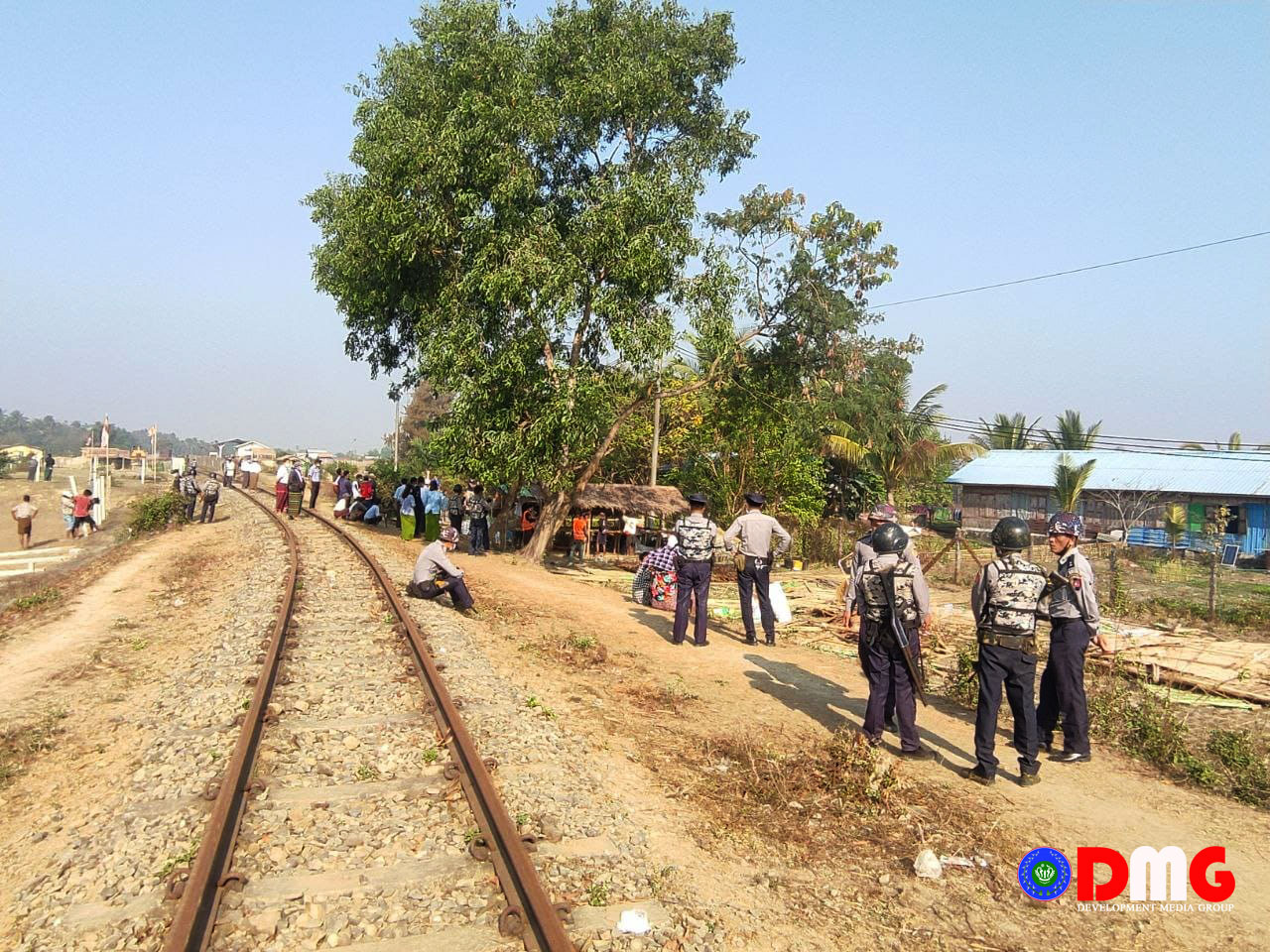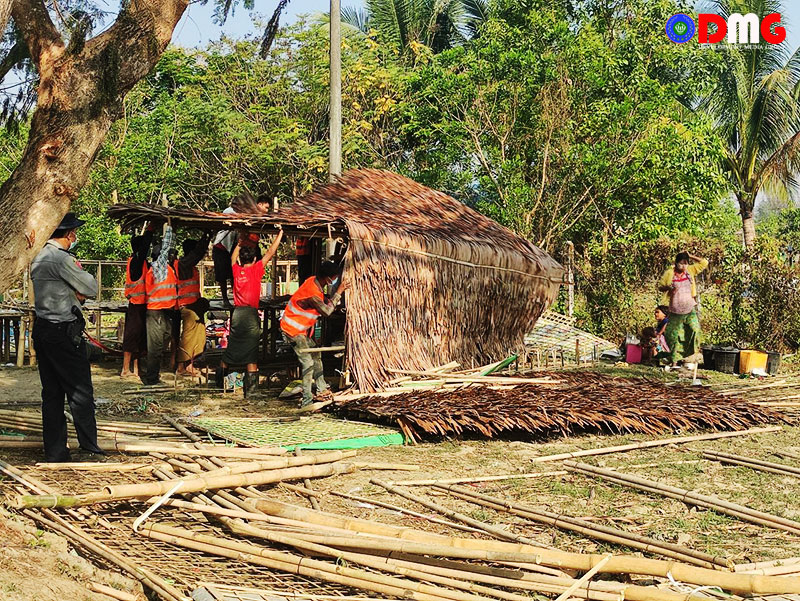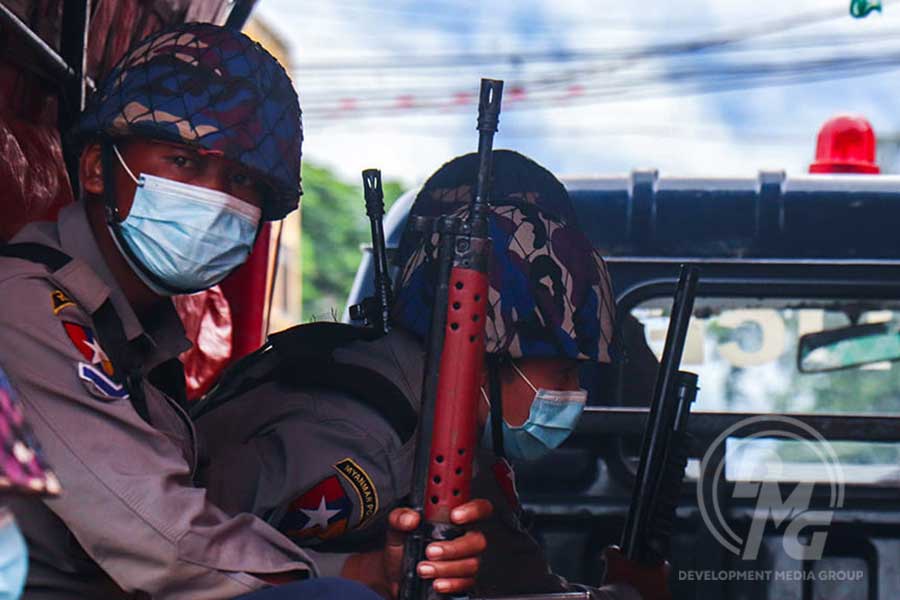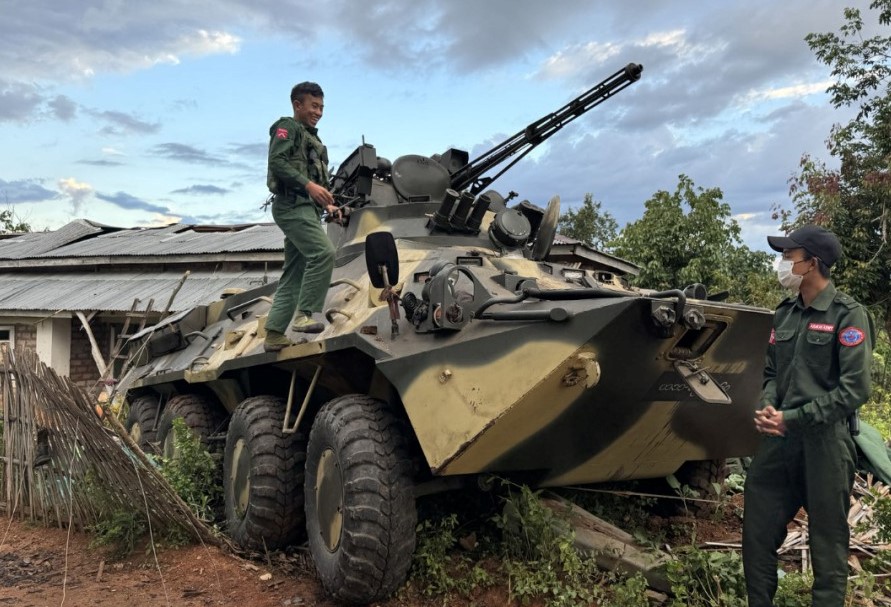- Junta conscripts 500 Muslims in Sittwe
- Thousands of houses torched, bulldozed by junta in Buthidaung
- Driver killed, two injured as junta soldiers open fire on bus in Thandwe Twsp
- Regime shelling kills two civilians, injures another in two Arakan State townships
- Septuagenarian loses leg in landmine explosion in Kyaukphyu Twsp
Railside squatters evicted in Sittwe
Squatters living along the railway between Sittwe Station and Sittwe University Station in the Arakan State capital were evicted on Wednesday.
09 Mar 2022

DMG Newsroom
9 March 2022, Sittwe
Squatters living along the railway between Sittwe Station and Sittwe University Station in the Arakan State capital were evicted on Wednesday.
Around 100 junta soldiers, police and departmental personnel were involved in forcibly removing the squatters, a police officer involved told DMG on condition of anonymity.
“Staff from district- and township-level departments as well as municipal workers were involved,” said the officer.
The military regime is planning to resume train services on the Sittwe-Yay Chan Pyin section of the railroad, said Arakan State’s transport minister, Police Colonel Thet Lwin.
“Squatters are mainly concentrated near Sittwe Station. There are not many squatters elsewhere [along the railroad]. So, we have had to remove them,” he told DMG.
Dozens of squatters were removed on Wednesday and the rest will be evicted on Thursday.

“We told the captain that it is not convenient for us to move out immediately. He said he would then come tomorrow. But we have nowhere else to go,” said squatter Daw Thein Than Htay.
Another squatter, U Tun Kyaw Oo, said many squatters including himself had bought the spaces, often at great personal cost.
“We arrived here after we were displaced by the fighting. We then bought this land plot with all our belongings. And we don’t know where to go now. I want the authorities to consider us,” he said.
A staffer from Myanma Railways (MR) in Sittwe said some people had illegally sold MR-owned land near Sittwe Station, contributing to the squatter problem.
After they received notice to vacate last month, squatters filed a petition to the Arakan State military council on February 28, seeking to put a stop to the eviction order.
There were more than 70 households squatting in the area before the clearance operations began on Wednesday, with most having migrated from rural areas.














